By Neena Bhandari
Braidwood (NSW, Australia): In the historic town of Braidwood, tucked away on leafy Duncan Street is a store with perhaps the largest collection of original oil lamps in the country.
A sloping gravel pathway leads to an opaque door, which slides open into a space every inch occupied by antique oil lamps from around the world. A young couple is intently listening to a tall man in his seventies, relating the story of a large floor-standing Egyptian oil lamp. It’s the owner of The Original Lamp Shop, Robert J. Aernout, who greets us and continues to show the couple his collection of myriad lamps. There are lamps of all shapes, sizes and materials, adorning the shelves, the floor, and some hanging low from the rafters.
One can’t help, but wonder, who would still be buying this medieval source of light in the times of LED (light emitting diode), sensor and automatic internet-operated lights?
The price tags range between $100 and $10,000. Aernout explains that a lamp is priced based on its design, condition, age and historical significance. A rare pair can cost up to $20,000. The couple select a porcelain table lamp and leave with their prized acquisition, promising to return.
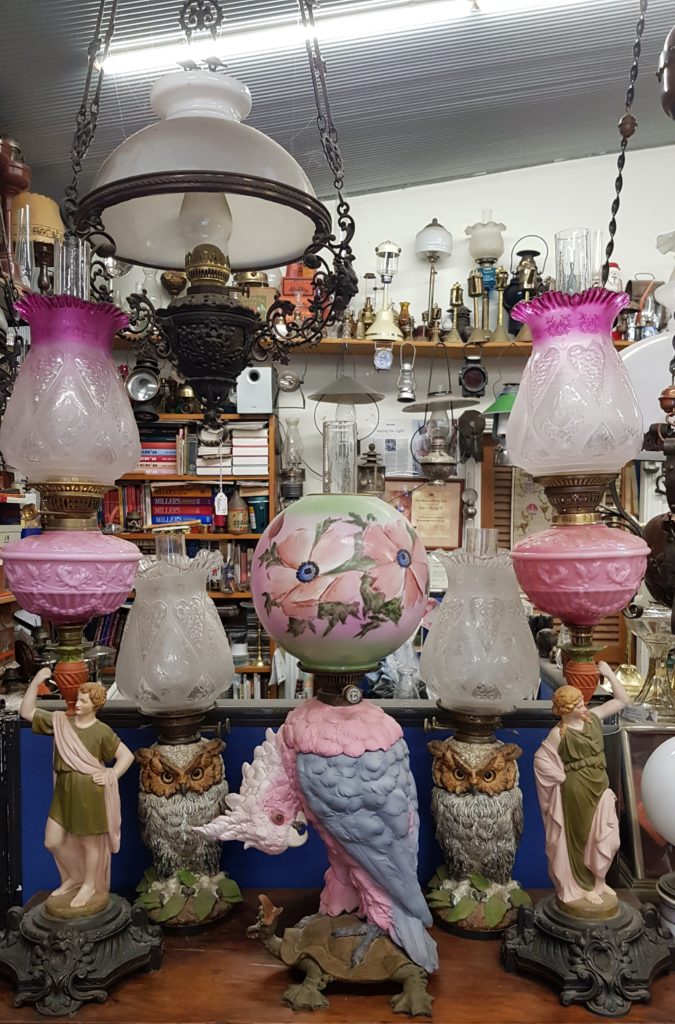 “In these uncertain times of power cuts and rising energy prices, oil lamps have a steady future”, Aernout tells us. A future, he was unsure of 30 years ago when a lady friend had walked into his antique shop in Lake Bathurst (NSW) and pleaded with him to exchange an original oil lamp for a thousand dollars. She needed the money to buy formal work clothes for a sudden job interview in Canberra.
“In these uncertain times of power cuts and rising energy prices, oil lamps have a steady future”, Aernout tells us. A future, he was unsure of 30 years ago when a lady friend had walked into his antique shop in Lake Bathurst (NSW) and pleaded with him to exchange an original oil lamp for a thousand dollars. She needed the money to buy formal work clothes for a sudden job interview in Canberra.
“It was a lot of money, but it was a nice lamp. Not knowing much about oil lamps, I took a gamble and reluctantly bought the lamp because I could see her desperation and wanted to help”, says Aernout.
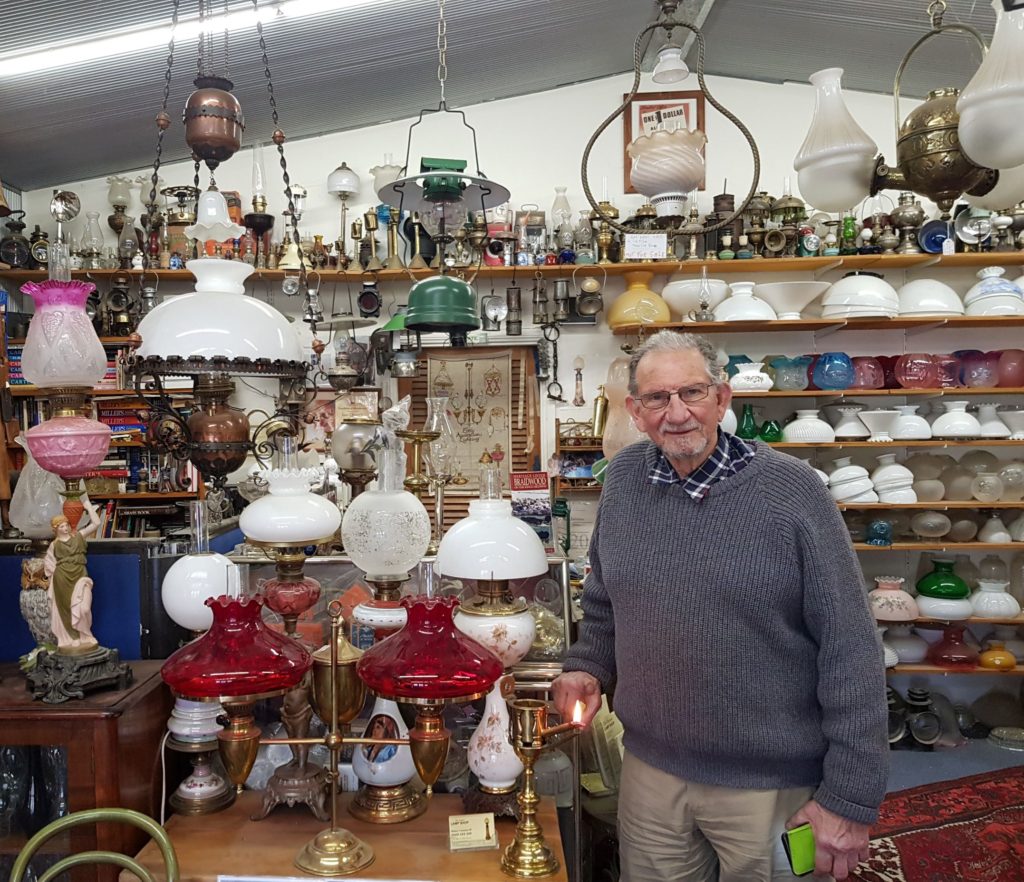 Later that night, he lit the lamp and placed it on his dining table. “The aura of the light was magical. Its warm glow created a soothing and intimate ambience. I instantly fell in love with it”, he adds.
Later that night, he lit the lamp and placed it on his dining table. “The aura of the light was magical. Its warm glow created a soothing and intimate ambience. I instantly fell in love with it”, he adds.
This ignited his quest for oil lamps. Much to his surprise, he discovered that his lady friend had sold him an English lamp from the 1880s, which was worth a lot more than what he had paid for. As his fascination for oil lamps grew, a year later he switched his antique business to deal exclusively in original oil lamps and moved to Braidwood.
His friends in the antique business cautioned him against it. “They thought I was insane to get into old oil lamps business and they were confident that I wouldn’t last long. It was 1990, but I have never looked back with any regrets”, says Aernout, who then decided to travel across Europe. He bought some lamps from the 1870-1880s at auctions and began building his distinct collection. From then on, he began travelling overseas every year to add to his collection, but didn’t return to any auctions.
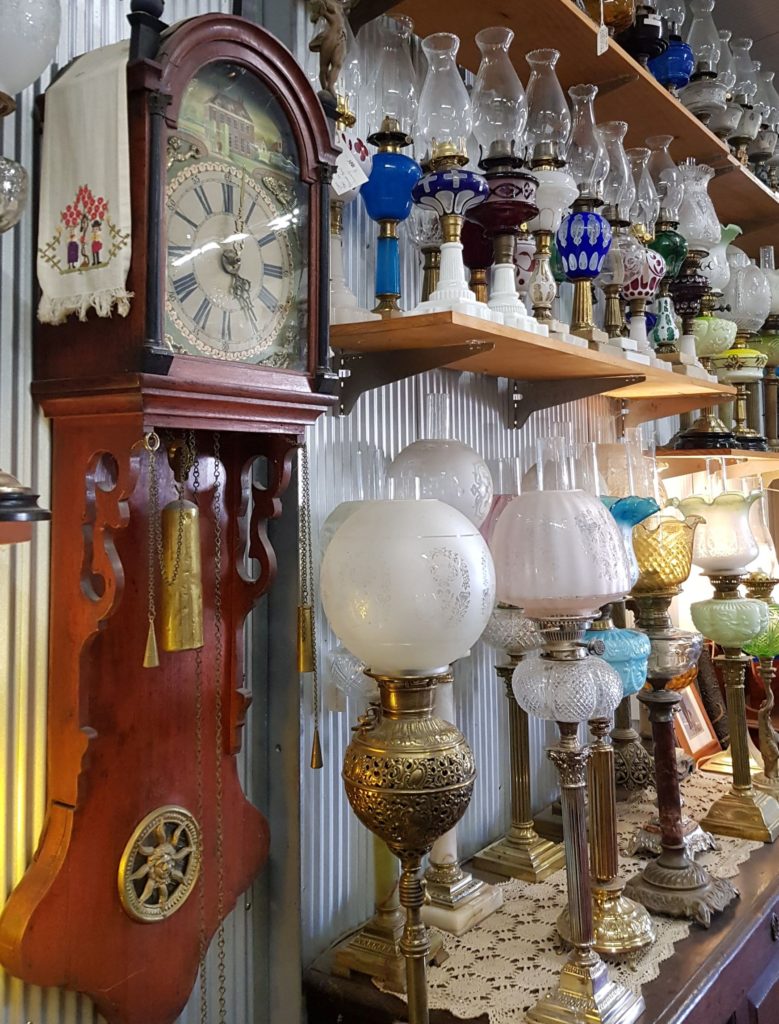 He was drawn to Europe because he had grown up in Bussum, The Netherlands. Born to Dutch parents in 1940 in Java (Indonesia), where his father was working in a tea plantation, Aernout had spent his early childhood in a Japanese prison camp in Indonesia, where his family was incarcerated during the Second World War. Immediately after the war ended, his father had to join The Royal Netherlands East Indies Army (Koninklijk Nederlands Indisch Leger). His father worked his way up to “under officer” in the KNIL Intelligence wing, but he was killed in February 1948. Few months later, young Aernout, his mother and his sister left Indonesia and sailed to The Netherlands.
He was drawn to Europe because he had grown up in Bussum, The Netherlands. Born to Dutch parents in 1940 in Java (Indonesia), where his father was working in a tea plantation, Aernout had spent his early childhood in a Japanese prison camp in Indonesia, where his family was incarcerated during the Second World War. Immediately after the war ended, his father had to join The Royal Netherlands East Indies Army (Koninklijk Nederlands Indisch Leger). His father worked his way up to “under officer” in the KNIL Intelligence wing, but he was killed in February 1948. Few months later, young Aernout, his mother and his sister left Indonesia and sailed to The Netherlands.
“We spent the next 15 years in vain, trying to get justice for my father. This interrupted and impacted my schooling and education”, says Aernout, the disappointment palpable in his voice. Disenchanted by The Netherlands, in 1963 he moved to New Zealand and then to Australia in 1970.
Visitors to his store range from curious overseas and inter-state visitors to prospective customers and discerning collectors of original oil lamps. He says, “People buy oil lamps for very personal reasons. It could be for a lamp’s style, its price or the quality of light. Cranberry tinted glass oil lamps are much sought after, but they are difficult to find. The incandescent Aladdin lamps are most popular because they emit the brightest glow, about 90 candle power”.
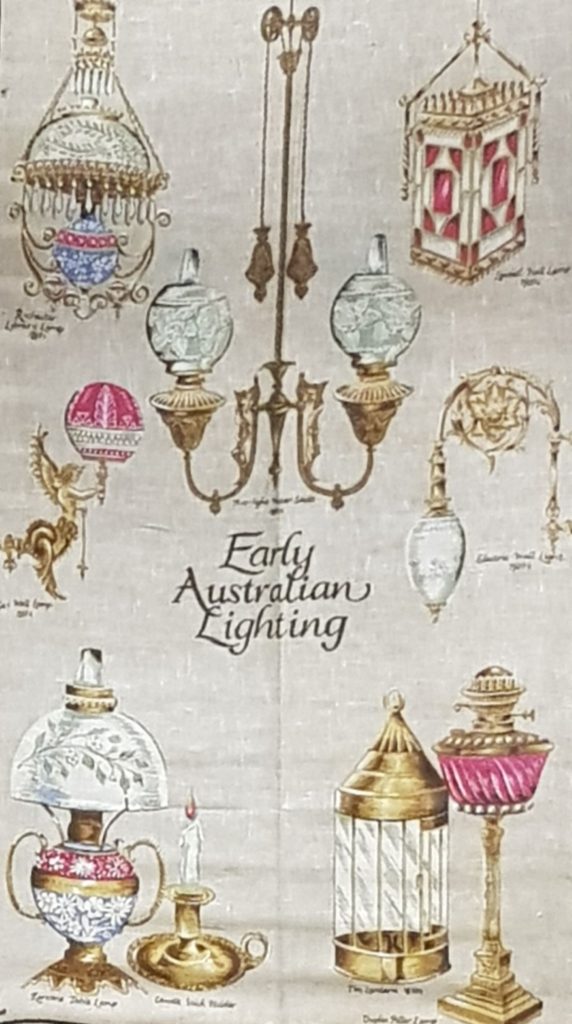 He passionately describes the intricate details that make each lamp in his collection unique. “The light an oil lamp emits is determined by the wick. The smallest wick is the size of a shoe string and flat wicks range between 7mm to 90mm”, says Aernout as he kindles an English Banquet lamps with two wicks. “These were designed to double the level of illumination. For example, a 22mm wick is about 5 to 10 candle power (1 candle power = 12.57 lumens)”.
He passionately describes the intricate details that make each lamp in his collection unique. “The light an oil lamp emits is determined by the wick. The smallest wick is the size of a shoe string and flat wicks range between 7mm to 90mm”, says Aernout as he kindles an English Banquet lamps with two wicks. “These were designed to double the level of illumination. For example, a 22mm wick is about 5 to 10 candle power (1 candle power = 12.57 lumens)”.
The oils used in these lamps have come a long way too, from fish and whale oil, castor and vegetable oils, olive oil and ghee (butter oil) to petroleum and kerosene.
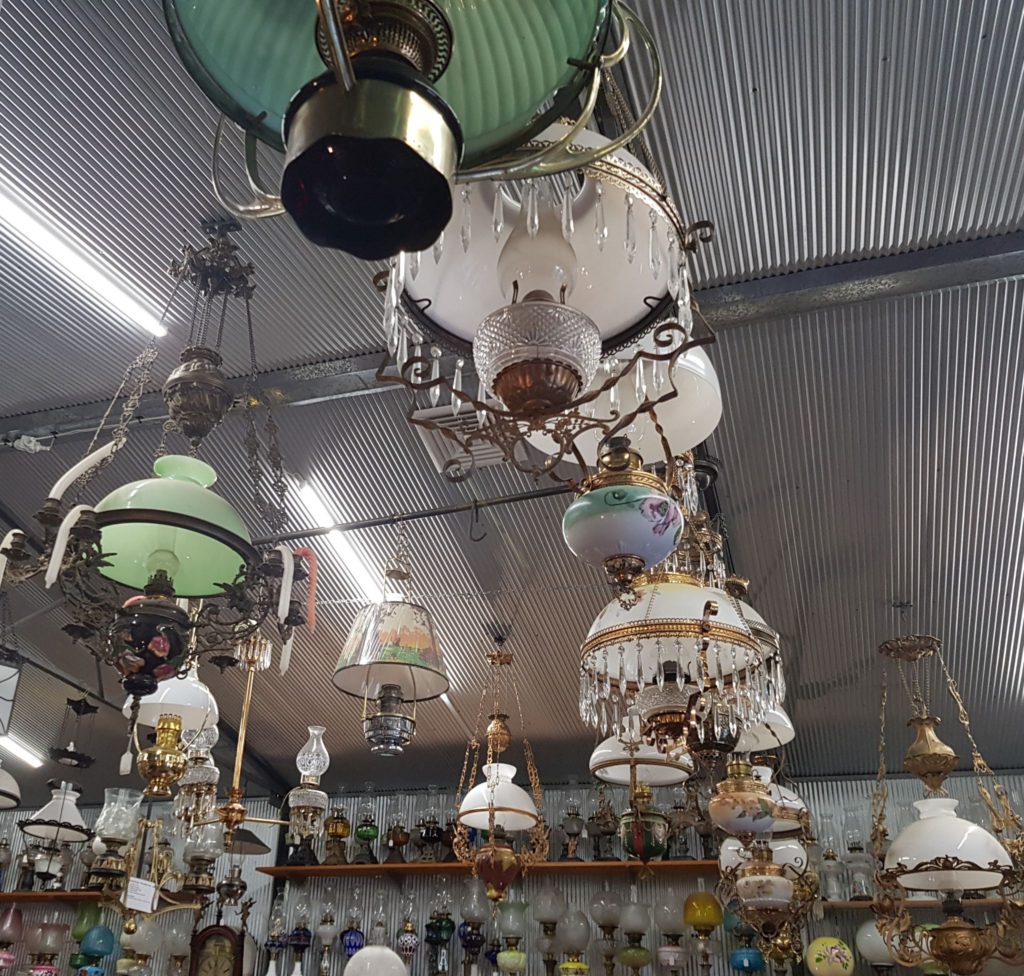 “I recommend paraffin oil, which is cost-effective and odourless. It burns the wick gradually and does not create smoke”, says Aernout, who doesn’t need to travel to procure lamps anymore. A dear friend of his, who regularly travels to Europe, the United Kingdom and the United States for his antique business, sends him pictures with details of oil lamps via WhatsApp and he lets him know in real time to purchase or not.
“I recommend paraffin oil, which is cost-effective and odourless. It burns the wick gradually and does not create smoke”, says Aernout, who doesn’t need to travel to procure lamps anymore. A dear friend of his, who regularly travels to Europe, the United Kingdom and the United States for his antique business, sends him pictures with details of oil lamps via WhatsApp and he lets him know in real time to purchase or not.
“It is a unique business, filling a niche for original oil lamps”, he adds, as we step out into the cacophonic chatter of pink and grey galahs and marble white corellas returning to roost for the night, with our very own original oil lamp in the mellow warmth of the setting sun.
© Copyright Neena Bhandari. All rights reserved. Republication, copying or using information or photographs from neenabhandari.com content is expressly prohibited without the permission of the writer and the media outlet syndicating or publishing the article.

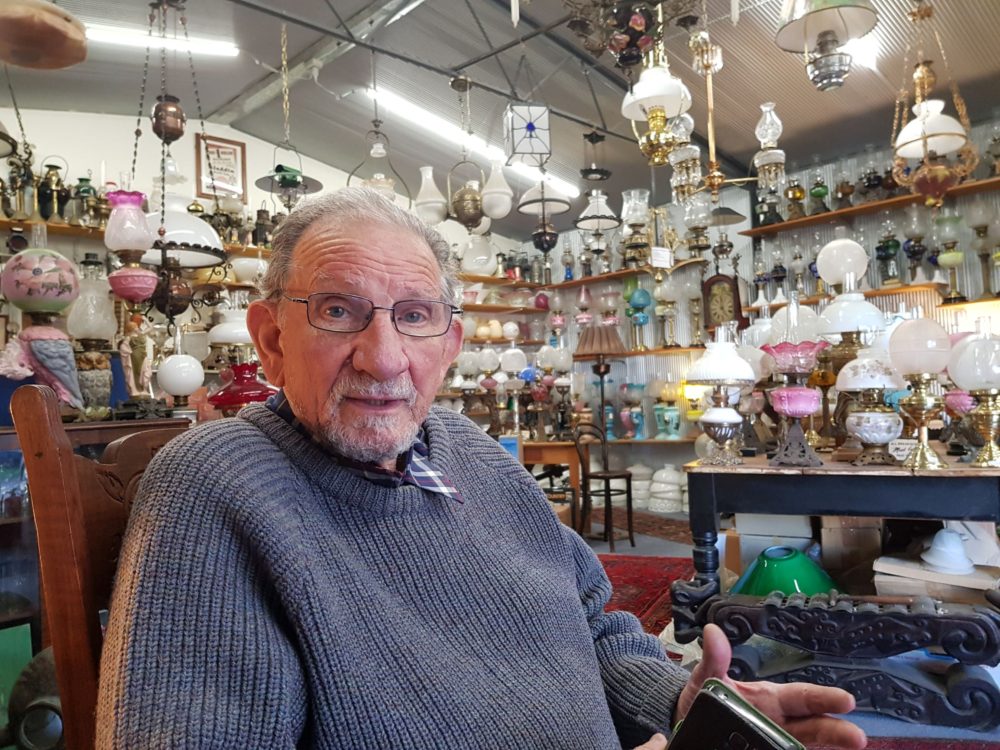
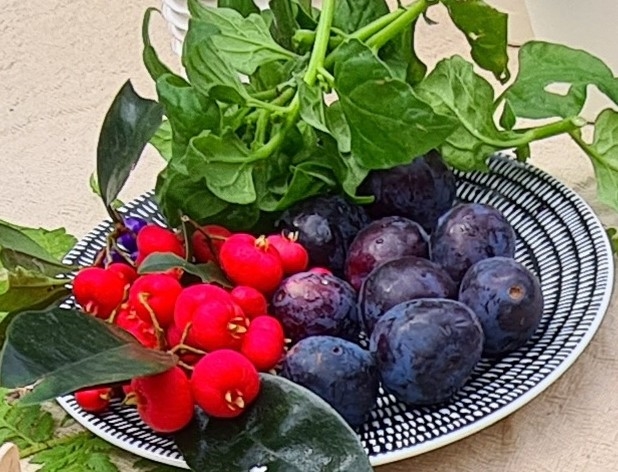


Was very interested to read Roberts story as Bill & I got to know him pretty well when Bill Had Lamp
Shop “Oxford Antiques” in Manchester St Christchurch – he also stayed with us at our home . Sadly we lost contact . Bill closed his shop and we lost our house in earthquakes . Would be special to reconnect .
Kathy Lawrence
Wonderful to read a tribute to a good friend, a very generous person in words and deeds. I never get tired of visiting Robert’s gallery which I believe is unique in Australia and would stand up in World collections. Thank you for writing up Robert’s story.
Dennis Dempsey
I am great fan of your writing style. I believe anything that touches your pen become worthwhile reading. The content, research and the description is bundled to convey the essence in its richness. The oil lamp article is so good.